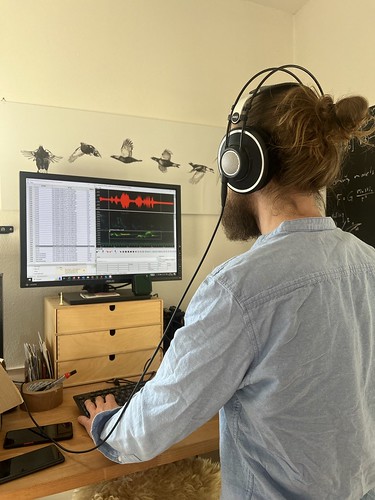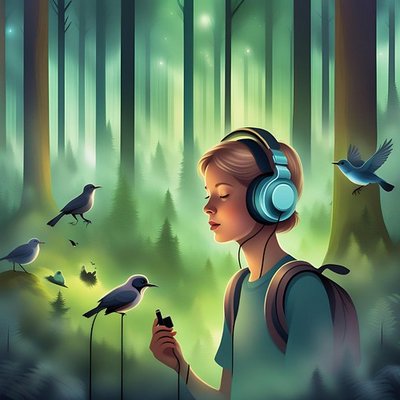Forest Groove
Forest biodiversity in tune
When pupils investigate the biodiversity of the forest not with a microscope but with a microphone and create their own sound mixes, then they are part of the innovative Sparkling Science project "Forest Groove" of the Austrian Research Centre for Forests (BFW). The project creatively combines science, environmental education and music. In partnership with the Natural History Museum Vienna, WienXtra Soundbase and Radio Orange, the project aims to raise awareness of the diverse world of forests and explore the acoustic diversity of these unique ecosystems. Pupils from the educational campus Deutschordenstraße, which is home to a kindergarten, a primary school, a secondary school and a music school, are actively involved in this exciting research journey.
The project focuses on researching acoustic biodiversity in the forest. Audio, such as bird calls and other environmental sounds, including human activity, are recorded and analyzed. The aim is to better understand how these sounds influence biodiversity. In addition, the project is investigating how the structure of the forest - like the presence of dead wood and micro-habitats - shapes acoustic diversity. The data collected will be made available to the scientific community via citizen science platforms such as iNaturalist.
A particular highlight of the project is the active participation of the pupils. They not only learn how to document and analyze biodiversity and forest structure, but also have the opportunity to create sound mixes from the recorded forest sounds. Through targeted workshops, the students are also introduced to the use of citizen science apps and the art of sound editing. In addition, the students learn to produce a podcast episode in which they present their project results and sound mixes. These finished podcasts are then broadcast on free radio so that the young researchers can make their findings and creative sound mixes available to a wide audience. This creative approach not only promotes environmental awareness, but also strengthens the students' artistic skills.
Close cooperation with educational institutions will be further intensified through the development of teaching and learning materials on forest biodiversity and music. In addition, a training module for forest educators will be offered to provide sustainable educational impetus.
Using a microphone instead of a microscope, "Forest Groove" creates an innovative bridge between nature and music, promotes interdisciplinary cooperation and makes the biodiversity of the forest audible to a wide audience.
 Schools
Schools
 Partners from Economy and Society
Partners from Economy and Society
 Scientific institutions
Scientific institutions






